ASM Metals HandBook Vol. 17 - Nondestructive Evaluation and Quality Control
Подождите немного. Документ загружается.

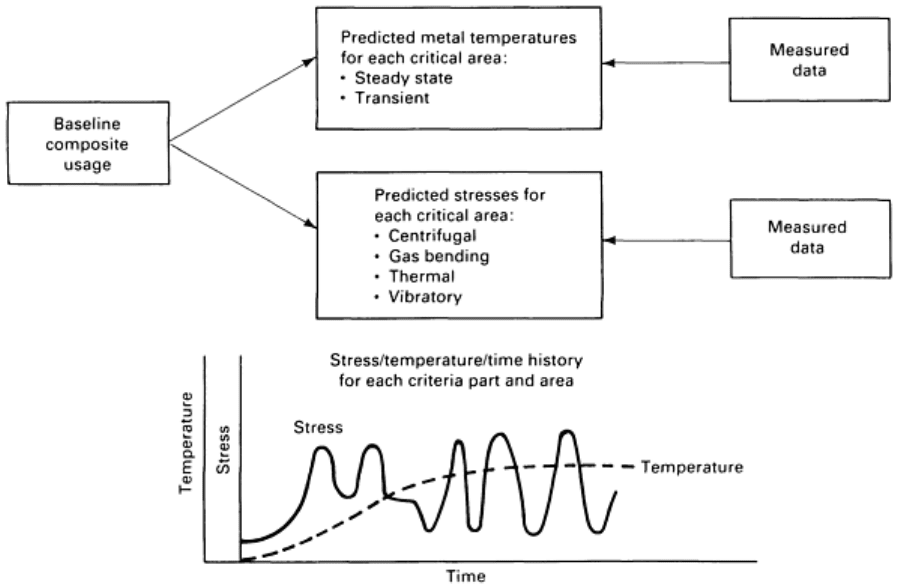
Most of the tasks to be contained in the Damage Tolerance Control Plan have been accomplished by engine
manufacturers in past development and production programs. However, the damage tolerance requirement now
established by the Air Force imposes the need for new tasks as well as tighter controls and more involvement among the
functional areas. Experience indicates that the development and implementation of a Damage Tolerance Control Plan are
difficult, but experience also shows very strongly that the development of a plan results in an improved understanding of
what must be done. The importance of having a plan rests on the involvement of multiple functional areas and the
criticality of having assigned responsibilities for each task.
A particularly important part of the Damage Tolerance Control Plan is the requirement for early trade studies for design
concepts/materials/weight/performance/cost. These trade studies are critical to defining cost versus requirement (for
example, weight impact versus inspection interval).
Analysis and Test Correlation Requirement. The procedure for the analysis of damage tolerance includes the
development of stress spectra (Fig. 7) and the analysis and testing of residual life (Fig. 8). Particular emphasis is placed
on establishing a correlation between analytical predictions and test measurements for the growth of cracks in critical
areas. Refined analysis models that predict the stress state at and away from the surface, as well as multiple cyclic tests of
coupons, subcomponents, and full-scale components in the presence of initial damage, are required. As with the overall
ENSIP development philosophy, damage tolerance analysis and tests are conducted early with minimum impact. Test
requirements include:
• Specimen tests to define basic material fracture data, such as the plane-strain fracture toughness (K
Ic
),
the plane-stress fracture toughness (K
c
), the threshold stress intensity for stress-
corrosion cracking
(K
Iscc
), and the crack growth curve, which defines the crack growth rate da/dN (where a
is the crack
length and N is the number of cycles)
•
Subcomponent tests to evaluate crack growth at typical critical features, such as bolt holes and fillet
radii
• Spin pit test of full-scale components, such as disks, spacers, or rotors
• Engine testing of preflawed components
Fig. 7 Development of stress spectra
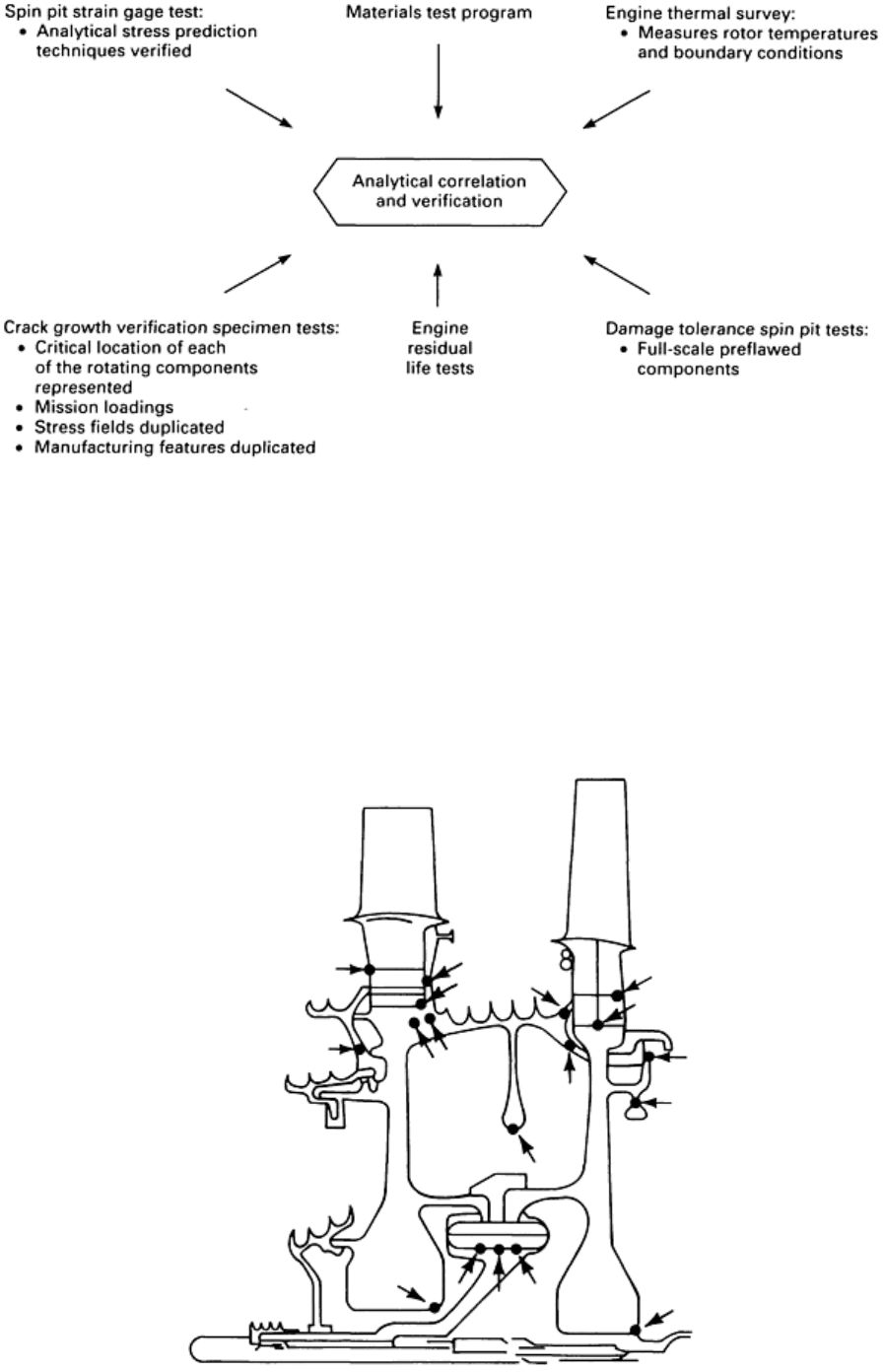
Fig. 8 Residual life analysis and test procedure
A typical test configuration for a cyclic spin test is shown in Fig. 9, and typical empirical data are shown in Fig. 10, 11,
12. Verification requirements may also include engine test with components that are preflawed or cracked in critical
locations to determine the effects of the real environment (temperature and gradient, vibration, and so on). Such tests must
be closely controlled and monitored using the inspection requirements planned for service engines to ensure safety of the
test engine.
Fig. 9
Typical setup for a cyclic spin test (heated spin pit) of turbine rotor. Arrows indicate critical locations that
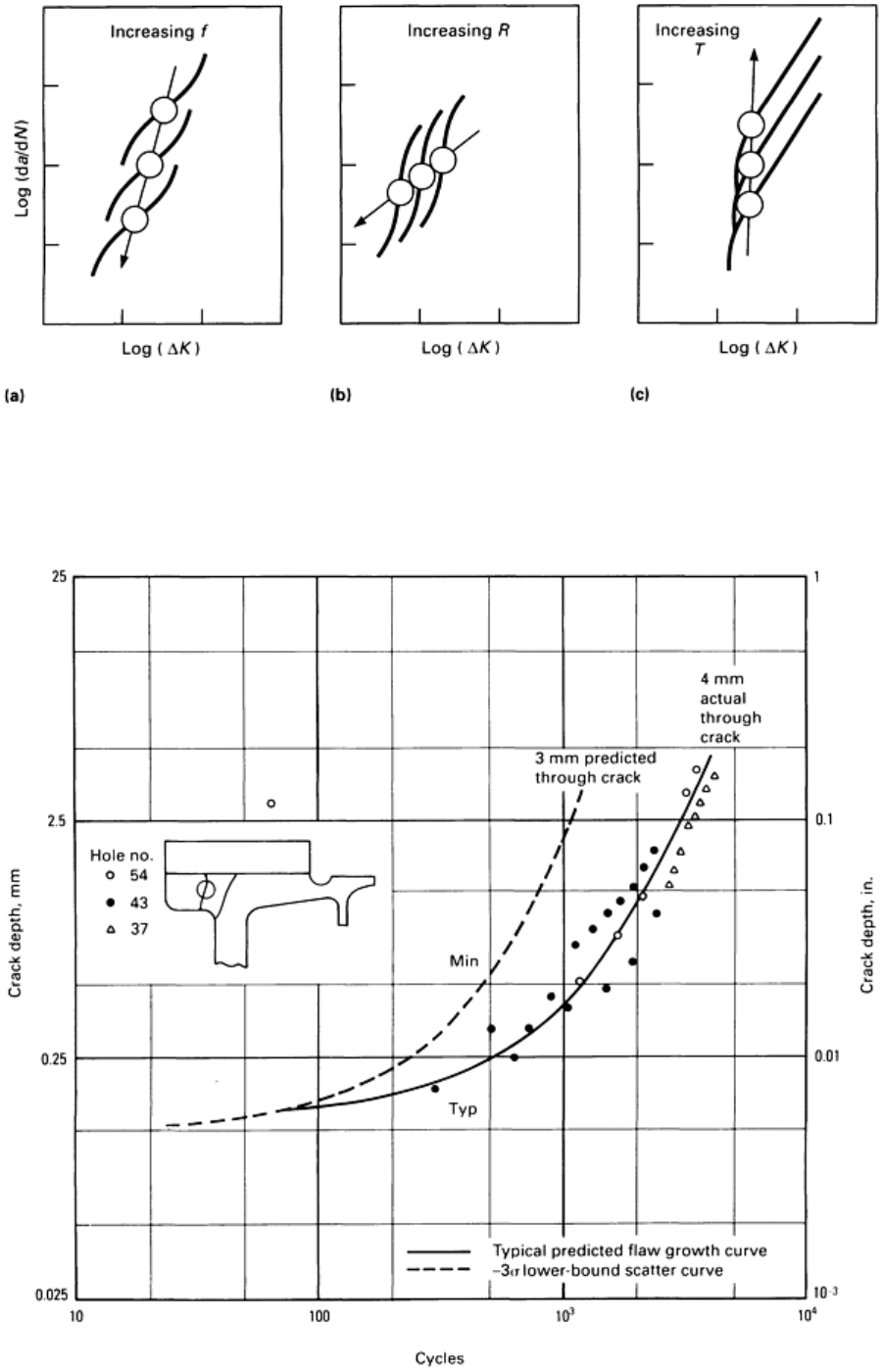
were preflawed to simulate the worst expected damage.
Fig. 10 Crack progagation as influenced by increases in three parameters. (a) Frequency, f. (b) Stress ratio, R
.
(c) Temperature, T. The variable K is the calculated stress at the crack tip.

Fig. 11 Actual and predicted flaw growth for an engine test on a second-stage high-
pressure turbine disk
forward cooling air hole
Fig. 12
Methodology correlation (specimens and
components)
Nondestructive evaluation requirements are implemented on fracture-critical parts during manufacture and during
field/depot inspection to ensure safety. Specific inspection requirements are derived through design analysis trade-offs
among initial flaw size assumption, stress level, and material properties for a given usage (stress environment spectrum).
As discussed in the section "Initial Flaw Size" in this article, a flaw size assumption (for surface flaws) of less than 0.75
mm (0.030 in.) requires implementation of enhanced NDE (that is, eddy current inspection). The ability of eddy current
inspection to reliably detect surface flaws having depths of 0.13 mm (0.005 in.) has been demonstrated in several
applications. Primary emphasis on the use of eddy current inspection is for stress concentration areas in which a small
flaw size assumption is required to achieve the necessary residual life without excessive weight penalty. Typical
probability of detection data for eddy current inspection in Fig. 13.

Fig. 13 POD curves with eddy current inspection. All curves are for lower 95% confidence limit.
In general, fluorescent penetrant inspection is specified for areas in which the detection of a flaw with a surface length of
0.75 mm (0.030 in.) or larger is required to achieve the specified residual life. However, the ability of current fluorescent
penetrant inspection processes to reliably detect 0.75 mm (0.030 in.) flaws is not clear. Therefore, in some cases, eddy
current inspection may be specified for large areas if susceptibility data (that is, probabilistic data on the capability of
fluorescent penetrant inspection) indicate the need. Data generated on numerous demonstration programs clearly indicate
that the fluorescent penetrant inspection process can be significantly improved through upgraded training, equipment, and
procedures (proper cleaning, including etch, hydrophilic emulsifier, and wet developer). These demonstration programs
have been conducted on several engine development programs (F100, F101, F110, F110-GE-129, F100-PW-229) and
laboratory technology programs (Air Force Wright Research and Development Center). Some typical detection
improvements that have been demonstrated for upgraded fluorescent penetrant inspection processes are shown in Fig. 14.
The critical need is to implement the best fluorescent penetrant inspection process within industry and within the Air
Force logistics centers because this method will likely remain the most widely used for inspecting large areas for
cracklike damage.
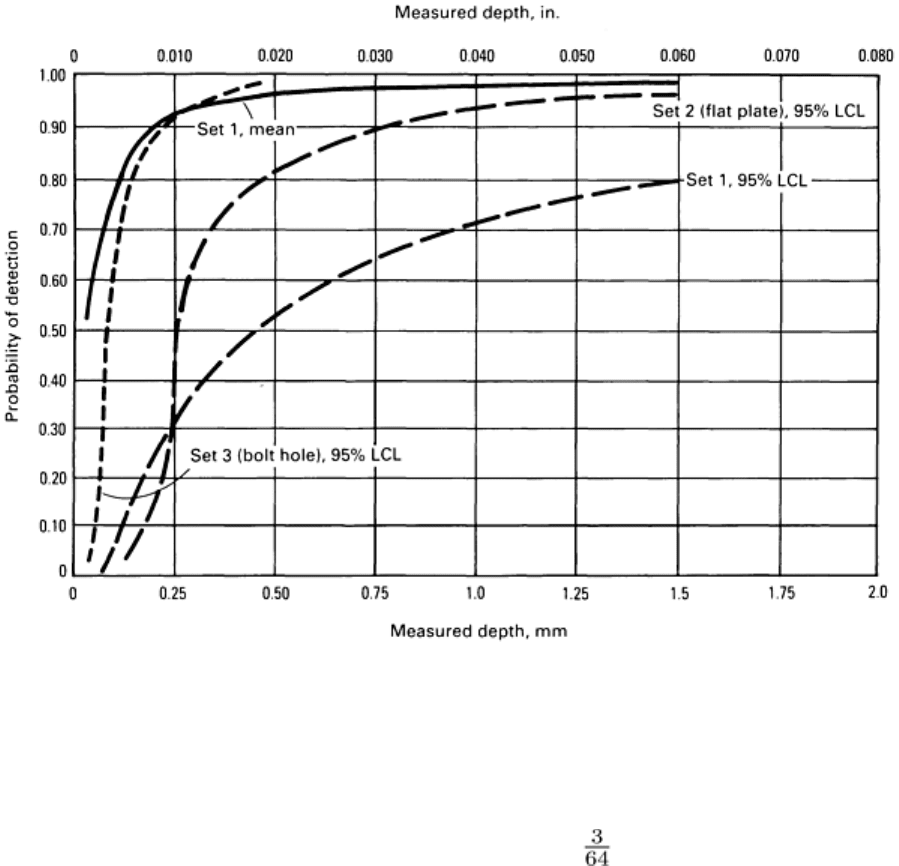
Fig. 14 Probability of detection with fluorescent penetrant inspection. LCL, lower confidence limit
Another critical NDE need is to quantify the POD of ultrasonics to detect imbedded defects in bulk volumes and to
develop inspection methods for finished shapes. Very limited data indicate that reliable detection limits may be as large as
1.3 mm
2
(0.002 in.
2
) (approximately equal to a planar disk of 1.2 mm, or in., diameter). The goal is to develop and
implement ultrasonic inspection methods such that a residual life equal to two times the required life or the inspection
interval can be achieved, assuming the largest undetectable flaw size without excessive impact on weight.
Retirement-for-Cause (RFC). Traditionally, components whose dominant failure mode is low-cycle fatigue have
been designed to a crack initiation criterion. With this approach, only 1 component in a population of 1000 would have
actually initiated a crack, and the remaining 999 components would be discarded with substantial undefined useful life to
crack initiation remaining. Figure 15 shows that the difference between the number of cycles to reach the design-
allowable curve and the population average curve for an average component would have consumed only 10% or less of its
potential useful life-to-crack initiation. Under the initiation criterion, there is no way to utilize this potential life without
accepting a higher probability of failure of the remaining components.
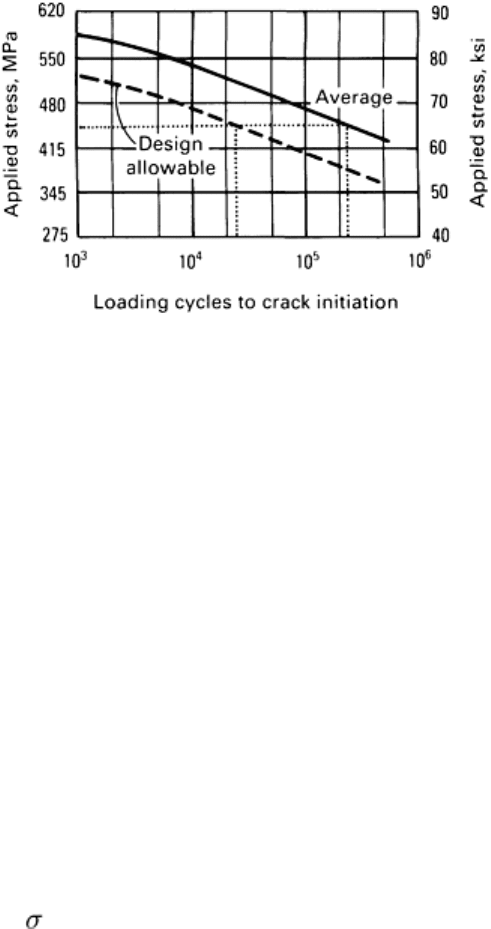
Fig. 15 Stress versus loading cycles to crack initiation for Inconel 718. Temperature is 540 °C (1000 °F),
and
the ratio of alternating stress to mean stress (A ratio) = 1.
Under the RFC concept, this additional useful life can be utilized by adopting a rejection criterion that uses each
component in a population until it specifically initiates a crack, rather than rejecting the entire population on the behavior
of the statistical minimum. The development of fracture mechanics concepts over the last several years has permitted the
degree of predictability for crack progagation rates necessary to implement such an approach on a safe basis.
The RFC concept would apply the fracture control philosophy (Fig. 4) to life management. In using RFC as an operating
system, all components would be inspected first at the end of a safety limit period divided by an appropriate safety
margin, and only those components containing detectable cracks equal to or greater than a
i
would be retired or repaired.
All others would be returned for additional service (with the assumption that if a flaw existed, it would be smaller than a
i
for another inspection interval). In this way, the crack progagation residual life is continually reset to a safe value. By
following this approach, components are rejected only for cause (cracks), and each component is allowed to operate for
its own specific crack initiation life. It should be noted that if a crack is missed at the first inspection interval, another
chance should exist to find a larger crack.
It is clear that not all fatigue-limited components can be handled in this way and that each component must be evaluated
individually to determine the technical feasibility of RFC. Low-cycle fatigue is a real physical phenomenon that is not
directly associated with the presence of defects. Any criterion, initiation or otherwise, that allows components to run
beyond a design-allowable life (-3 , for example) or beyond the average life will inherently result in a significant
increase in the probability of a large number of cracks and possible failures. Such an increase in risk may be acceptable,
but must be understood and evaluated. Any inspection process has associated with it a finite probability of detection and
therefore a finite probability of missing real cracks (not just defects assumed to be there and assumed to be in the form of
sharp cracks). Missing real cracks and presuming that crack growth knowledge is sufficient to detect cracks at the next
inspection has significantly more risk associated with it than concern over possible defects.
The economic feasibility of RFC must also be evaluated. The inspection interval must be such that it does not place undue
constraints on the operation of the component or that the cost of the necessary tear-down and inspection does not negate
the advantage of the life extension. It seems unlikely that RFC can be applied to components limited by high-cycle fatigue
considerations, but for many high-cost components limited by low-cycle fatigue, such as engine disks, this approach does
offer significant economic advantages.
It is also clear that in applying RFC, nondestructive evaluation becomes a critical factor. The crack length determines the
residual life of the component, and its detection is limited by the resolution and reliability of the inspection system
employed. In many cases, the decision as to whether or not RFC can be applied to a component will be predicated upon
the ability of available NDE approaches to detect the initial flaw, a
i
, with sufficient sensitivity and reliability. Because
RFC procedure is based on fracture control concepts, the NDE techniques can be selected, refined, and focused on a
particular local area, rather than attempting to critically inspect large areas.

Fracture Control Philosophy
William D. Cowie, United States Air Force, Aeronautical System Division, Propulsion Directorate
Selected References
•
W.D. Cowie and T.A. Stein, "Damage Tolerant Design and Test Considerations in the Engine Structural
Integrity Program," Paper presented at the propulsion session of the 21st Structures, Structural Dynamics,
and Materials Conference, Seattle, WA, American Institute of Aeronautics and Astronautics, May 1980
•
T.T. King (ASD/EN), W.D. Cowie (ASD/YZEE), and W.H. Reimann (AFWL/MLLN), "Damage Tolerance
Design Concepts for Military Engines," Paper presented at AGARD Conference 393, San Antonio, T
X,
Advisory Group for Aerospace Research and Development, April 1985
•
C.F. Tiffany and W.D. Cowie, "Progress on the ENSIP Approach to Improved Structural Integrity in Gas
Turbine Engine/An Overview," Paper 78-WA/GT-13, presented at the Winter Annual Meet
ing (San
Francisco), American Society of Mechanical Engineers, Dec 1978
Applications of NDE Reliability to Systems
Ward D. Rummel, Martin Marietta Astronautics Group; Grover L. Hardy and Thomas D. Cooper, Wright Research & Development
Center, Wright-Patterson Air Force Base
Introduction
THE SUCCESS of a reliable NDE application depends greatly on the expertise and thoroughness of the NDE engineering
that is performed. This involves comprehensive analyses to define the relationships between the NDE measurements to be
made and the impact on the system functions being assessed and on the capability to implement the NDE measurements
to discriminate to the expected level of acceptance applied. Most failures in NDE systems applications and in the
automation of an NDE system can be attributed to failures in NDE engineering and to unrealistic NDE performance
expectations. All modern engineering is based on comprehensive applications of principles that can be implemented by
qualitative measurements and predictive modeling and on comprehensive procedural applications of principles based on
prior art and systems test data. Modern engineering methods are equally applicable to the use of NDE on a material,
component, structure, or system. The principles and data available are, however, not as well defined, generally
recognized, or understood as those of other engineering disciplines.
Applications of NDE Reliability to Systems
Ward D. Rummel, Martin Marietta Astronautics Group; Grover L. Hardy and Thomas D. Cooper, Wright Research & Development
Center, Wright-Patterson Air Force Base
General Considerations
Prior Art. Particular concern must be given to NDE assessment and analyses based on prior art. Although NDE methods
and principles have been applied since the beginning of time and have been applied specifically to quantitative materials
evaluation during the last decade, the perceived performance level is often considerably different from the actual
performance level. Differences can be attributed to the primitive level of understanding of materials, engineering, and
NDE engineering sciences and principles; excessive optimism in effecting early application of an NDE procedure;
economic and social pressure to solve problems with troublesome engineering systems; and the attitudes and practices of
our legal system.
Progressive developments in the evaluation of NDE reliability have established a new dimension for the assessment of
NDE performance. Applications of prior NDE art must be judiciously examined to determine suitability for new
applications. Quantification of the performance level, calibration (or process control) methods, and acceptance criteria are

particularly important in extrapolating the applicability of prior NDE data to a new NDE engineering problem.
Conversely, the lessons learned in applications of prior art can be very useful in design and calibration and process
control procedures, in establishing the characteristics and performance of materials and equipment used, in anticipating
the problems and controls necessary to effect application in a production environment, and in assessing human factors
relevant to the application.
Incorporation and integration of the qualitative factors and considerations in the application of prior art are essential for
making the transition from laboratory test data to production line use. However, careful analysis and criteria must be
applied to quantitative data from application of prior art. Quantitative assessment of ongoing NDE process applications
has shown that performance levels may vary considerably in NDE applications to established specification/process
requirements. Performance variations are rarely integrated into overall system reliability estimates and management is
rarely accurate in recognizing and identifying superior performance by human operators. Quantitative data must be
supported by actual NDE system measurements and accurate descriptions of NDE materials, equipment, procedures, and
human operator qualifications to be seriously considered in NDE system design or qualification by similarity. It must be
emphasized that quantitative data are not necessary for the multitude of NDE applications used to add confidence to
routine process control and other applications in which the NDE procedure does not constitute final acceptance of
performance characteristics. Quantitative data are required when the NDE measurement/acceptance is integral to design
acceptance and/or performance acceptance.
NDE Response. The response from an NDE system or process may take the form of a signal output (or outputs) or a
direct or indirect image. Acceptable conditions can be differentiated from unacceptable conditions by threshold
discrimination from the electronic output or by pattern recognition and threshold discrimination by image analyses.
Discrimination can be automated or performed by a human operator. Discrimination of threshold electronic signals can be
automated or gated to alert the human operator. The consistency and reliability of electronic signal discrimination can
often be improved by automating the discrimination process. Superior consistency and reliability of pattern recognition
and discrimination level for images are usually achieved by the human operator. The feasibility of application of NDE to
a system is dependent on the establishment and characterization of a relationship between the response from an NDE
output and a desired engineering system performance parameter.
A direct or indirect relationship between an NDE response and a system performance characteristic may be functional
under laboratory conditions, but may be impractical in applications under production or service conditions. Factors such
as calibration, acceptance criteria, component accessibility, surface condition, inspection material compatibility, and
inspection environment must be assessed to determine that a positive relationship between NDE response and system
performance can be maintained.
NDE System Management and Schedule. The implementation of a reliable NDE procedure is dependent on
allowing time to collect data, perform the critical analyses, apply required resources, and develop operator (personnel)
skills. Many critical NDE procedures have been implemented as a result of unanticipated engineering system failures. The
economic and social pressures resulting from an engineering system failure must be judiciously balanced against the
required time and resources necessary to perform disciplined and thorough NDE engineering analyses, procedure
development, and procedure validations. After the required procedures have been implemented, NDE system/process
control must be maintained to ensure a consistent level of discrimination. Shortcuts in NDE engineering, NDE procedure
development, and NDE system/process control increase risks in system performance, may not reduce the risk of
engineering system failure, and may contribute to a false confidence level in system performance.
Applications of NDE Reliability to Systems
Ward D. Rummel, Martin Marietta Astronautics Group; Grover L. Hardy and Thomas D. Cooper, Wright Research & Development
Center, Wright-Patterson Air Force Base
NDE Engineering
The difference between NDE engineering and the classical engineering disciplines result from the variety of problems and
the indirect nature of NDE measurements on engineering system performance. The functional performance of most NDE
methods can be measured, controlling parameters can be documented, and performance output can be modeled; however,
the interaction of the NDE method with the test object necessitates the generation of new response parameters and

characteristics for many new applications. In addition, variations in material properties, geometry, surface condition,
access, or environmental conditions may modify the NDE responses. Therefore, NDE engineering is an essential element
of critical engineering system design, qualification, acceptance, and life cycle management. A critical design is not
complete until the NDE engineering has been performed and NDE system/process performance validated to functional
design requirements and acceptance criteria levels.
Procedure Selection/Development. Trade studies to identify and select candidate NDE procedures are needed for
establishing the most economical and reliable procedure that meets acceptance requirements. The process may be
satisfied by the assessment of prior art and applications to similar problems or may require research and development of
totally new procedures. For demanding applications, a combination of complementary NDE procedures may be required
to meet the acceptance criteria objectives. One or more methods can be further characterized and assessed to ensure that
the performance objectives, NDE performance margins, NDE costs, engineering system performance risks, and the risks
of NDE system/process false alarms can be balanced in overall engineering system management.
System/Process Performance Characteristics. Although care, discipline, and control measures are applied to
ensure a consistent output from an NDE system or process, the output will vary within the established control parameters
and as a result of slight variations in engineering hardware materials properties, geometry, surface condition, and so on. If
repetitive applications are made, a probability density distribution of signal/image output will be generated. This
distribution is similar to that obtained by repetitive measurements of a dimension such as a hole diameter or the length of
a bolt.
Nondestructive measurements are usually indirect, and positive signals may be generated from nonrelevant sources, such
as surface roughness, grain structure, and geometry variations. Such signals constitute the application noise inherent in a
specific NDE process or procedure. Discrimination of NDE signal/image outputs must be derived from those signal
levels/amplitudes that exceed the level of the application noise (Fig. 1). Analysis of signal and signal plus noise are
common in electronic devices, optics, and other discrimination processes. Similarly, the signal-to-noise margin (ratio) is a
primary factor in establishing the level of discrimination of an NDE procedure. Signal/noise reduction procedures can be
used to enhance the overall performance of an NDE procedure. However, it is important to recognize that the dominant
noise source in an NDE process is not electronic noise that may be reduced by filtering, multiple sampling, and averaging
techniques, but is instead the noise due to nonrelevant signals generated in applying the NDE procedure to a specific
hardware element.
Fig. 1 Signal/noise density distribution for a large flaw (a), a medium flaw (b), and a small flaw (c)
Conditional Probability in NDE Discrimination. Nondestructive evaluation involves the measurement of complex
parameters with inherent variations in both the measurement process and the test object. The output from such a
measurement/decision process can be analyzed as a problem in conditional probability. When an NDE assessment is
performed for the purpose of crack detection, the outcome is not a simple accept/reject (binary) process, as is frequently
envisioned. It is actually the product of conditional acceptance due to the interdependence of the measurement and
decision responses. Figure 2 shows the four possible outcomes that result from the application of NDE procedure for
crack detection. As shown in Fig. 2, the possible outcomes from an inspection process are:
• True positive (TP): A crack exists and is detected, where M
(A,a) is the total number of true positives
and P(A,a) is the probability of a true positive
